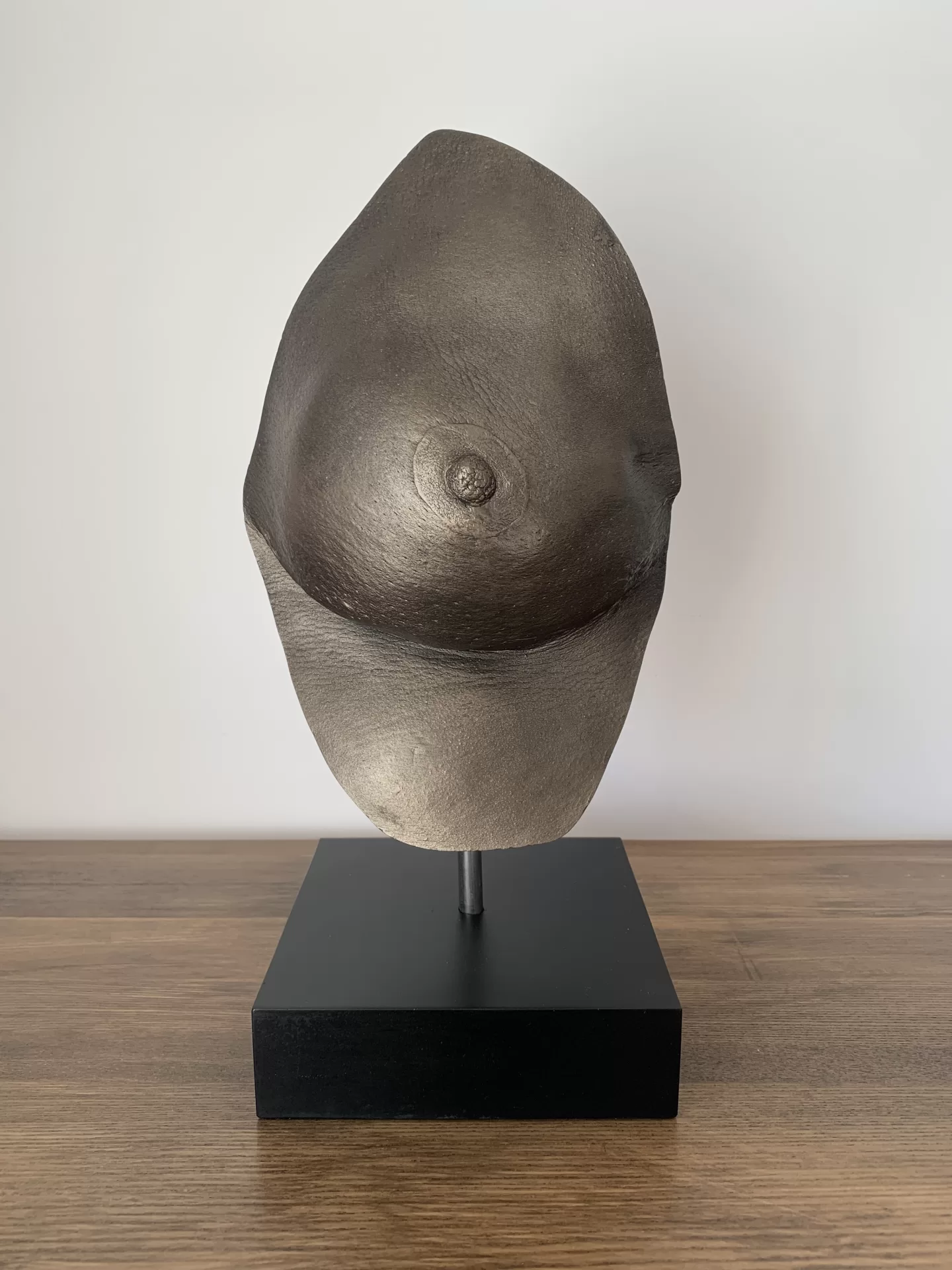How would you describe your initial reactions and feelings when you first received your breast cancer diagnosis?
My child will be an orphan. It was an instant and overwhelming thought. I remember that moment so vividly. Along with it came with a sea of tears and intense feelings of sadness and anger. Then I heard the words “SURVIVABLE”. It’s going to be ok.
What aspects of your individuality do you feel have been most challenged, changed or strengthened by this experience?
Most challenged has definitely been my independence – a reliance on others has been a difficult adjustment. But that help and support from so many, including trust in medical professionals is something I’ve come to warmly accept and fully appreciate.
Are there specific moments or experiences in your cancer journey that stand out to you, which you would like depicted in the sculpture?
Plenty, but I’ll save them for the book! The sculpture does demonstrate the surgical skill of Mr Stephenson in successfully performing nipple sparing surgery, not on just one, but two occasions – the first a therapeutic mammoplasty and then a mastectomy a few months later.
How has your perspective on life and your own identity evolved since your diagnosis?
Right now, I’m still a bit lost. I don’t recognise ‘me’. It’s a part of the journey though. Surgery, treatment, medication, forced menopause are steps all taken on a path to recovery. From my experience and what I hear from others, it’s rarely a quick journey nor a straight road.
How do you want the world to see you through this sculpture? What part of your reality, character, or experience would you like it to emphasise?
Strong, resilient, hopeful. I think the metallic finish of the sculpture depicts strength and the warm tone represents light and therefore hope – a future!
What has been your source of strength and resilience throughout your journey with breast cancer?
One word. Family.
What does being a part of this exhibition mean to you? How do you hope it might impact others who see your sculpture?
Creating awareness. It will hopefully help to show that early detection can often result in a positive prognosis.
Is there a specific message or emotion you want to convey to the audience of this exhibition, particularly to those who might be going through a similar experience?
T.L.C. Touch, Look, Check. Don’t rely on medical screening alone. My invasive diagnosis came just four months after a ‘normal’ mammogram result. Make T.L.C. part of your regular wellbeing routine.
How has the ABC community helped you with your journey?
ABC facilitated me meeting others who had faced similar life-changing decisions, enabling me to be better informed when reaching my own decisions on surgical procedures and treatment options.


